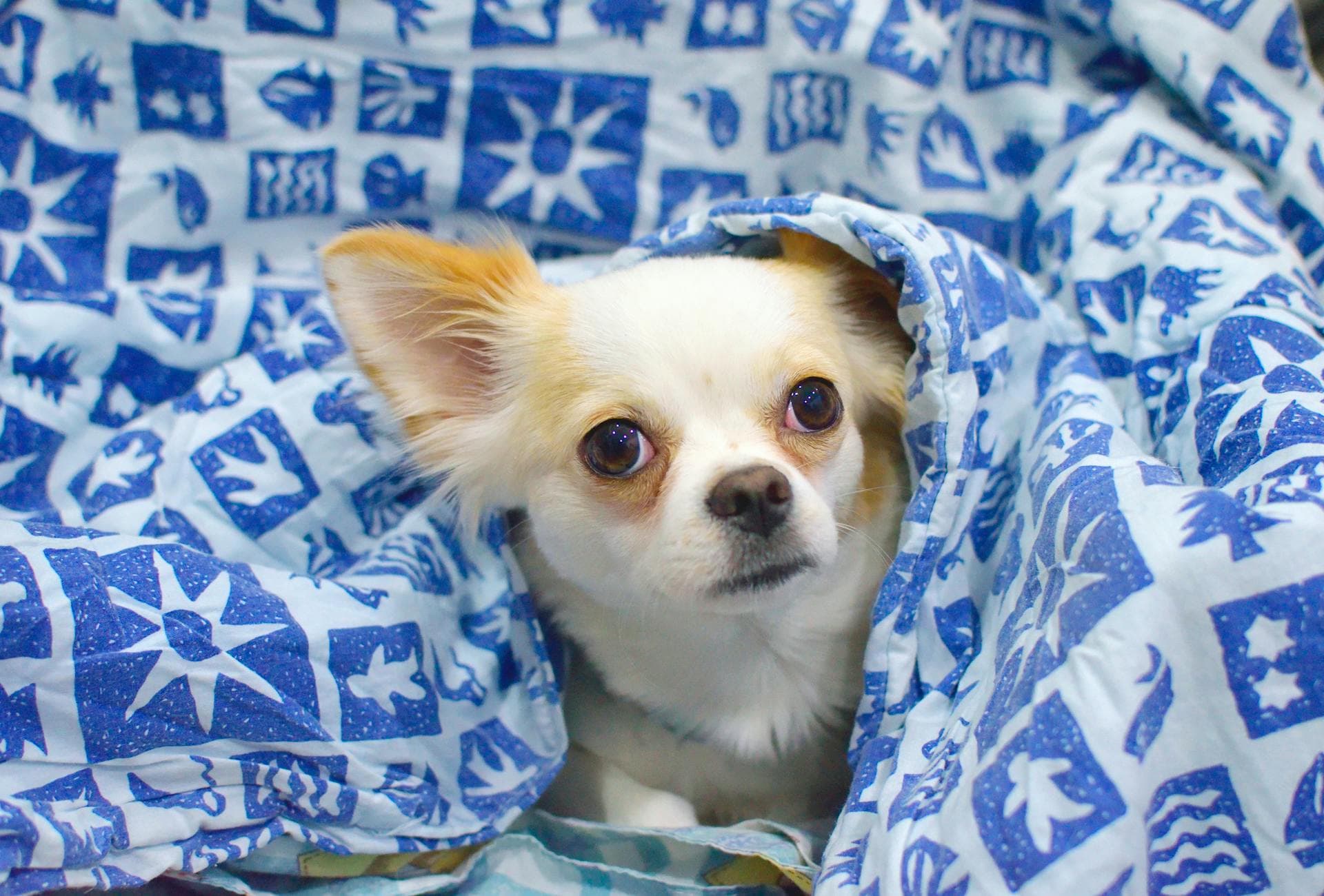As a dog parent who loves flying and traveling, it is crucial to understand that not all breeds can fly with you. Your dog's temperament and size typically determine if they can fly. So, before booking a flight, make sure your dog meets the criteria.
In this article, we cover the characteristics of dog breeds suitable for flying in-cabin, ways to prepare your dog for the flight, and some tips for a smooth in-cabin flight experience.
Understanding Airline Policies
Before you bring your dog with you in-cabin, it is essential to understand the airlines' policies for pets. If you are traveling from the US, you must learn about American Airlines pet policies, which usually includes:
Space Limit: The space for the pet carrier is limited. It is the space under the seat in front of you.
Weight Limit: Most airlines allow the in-cabin weight limit of around 17 pounds (8 kg) for dogs.
Carrier Size: A carrier 18 inches long, 11 inches wide, and 11 inches high is often allowed by airlines. Ensure your dog is comfortable and can stand, sit, and move around in the carrier.
Characteristics of Dog Breeds Suitable for In-Cabin Travel
If you travel on flights frequently and are looking for a canine companion to accompany you, the characteristics of dog breeds that make them suitable for in-cabin travel are:
The dog breed should weigh less than 20 pounds. They must easily fit in a carrier, where they can stand, sit, and turn around.
A friendly and calm dog makes a perfect in-cabin flying companion.
Dog breeds with snub noses feel difficulty breathing, so they may not be allowed to fly. So, choose dog breeds that do not have snub noses.
Top Dog Breeds That Can Fly In Cabin
The dog breeds that usually meet the in-cabin flying criteria and are a popular choice for travel partners include:
Chihuahua
With an ideal weight of around 4 to 6 pounds (1.8 to 2.7 kg), Chihuahuas will make the perfect travel companions. If you travel frequently, getting a Chihuahua can be an adequate choice because they are small enough to fit in cabin-approved carriers and require little space compared to other dog breeds.
Yorkshire Terrier
Another dog breed that can fly in the cabin is Yorkshire Terrier. These tiny dogs typically weigh around 7 pounds (3.2 kg), which goes perfectly well with the weight and size limit of the plane and can easily fit in a pet carrier.
Pomeranian
Pomeranian is another dog breed that fits the criteria for in-cabin flying, weighing around 3 to 7 pounds (1.4 to 3.2 kg). They are certainly one of the cutest and fluffiest cabin companions you will have.
Shih Tzu
Shih Tzu, generally an affectionate and friendly breed, can also be an option when flying in-cabin. However, European Shih Tzu is a better option for in-cabin travel (the other is American Shih Tzu). They usually weigh about 10 to 19 pounds (4.5 to 8.6 kg) and are sensitive to temperature, so keeping an eye on them during the flight is crucial.
Miniature Dachshund
This little dog breed weighs around 8 to 11 pounds (3.6 to 4.9 kg). They may bark at strangers, so training them to "quiet" and covering the carrier may help calm them during the flight.
Dog Breeds Not Allowed in the Hold of the Plane
The dog breeds restricted from traveling in the hold of the plane include:
”Dangerous Breeds”
Certain dog breeds are considered dangerous and are not allowed in the hold. Your Bulldog may be the sweetest, most loving dog, but some airlines and countries restrict them in the hold of the plane as they may get aggressive while traveling. Other “dangerous” dog breeds are:
Akita
American Staffordshire Terrier
Boerboel
Cane Corso
Dogo Argentino
Neapolitan Mastiff
Pitbull
Rottweilers
Snub-nosed Breeds
Dogs with snub noses, such as Bulldog and Chow Chow, face difficulty breathing, so flying in the hold can be dangerous. The snub-nosed breeds that should not travel in cargo are:
American Bulldog
Boston Terrier
Bullmastiff
Cane Corso
Mastiff
Newfoundland
Pekingese
Pug
Tibetan Spaniel
Giant Breeds
Flying a dog in the hold of the plane using a pet shipping company can be costly, and if you have a dog breed that is massive and may not comply with the weight and size limit of the airline, flying your dog in a carrier as excess baggage is not an option.
The airlines' policies vary based on the weight limit for excess baggage, but generally, 75 lbs is the upper limit. If you want to fly on a plane with a canine friend, avoid getting giant breeds such as Great Pyrenees, Great Dane, and Irish Wolfhounds.
Preparing Your Dog for Air Travel
When flying with a dog in the cabin, preparing them is as important as choosing the right breed for the trip. It will ensure a smooth experience for you and your inflight companion. Here are the things you need to take care of when getting your dog ready for the flight.
Buy a soft-sided pet carrier that fits under the seat in front of you. The size and weight of the carrier must comply with the pet flights policy. It is a crucial part of the pet flying process because it helps ensure they are close, safe, and comfortable during the flight.
Prepare your dog to get comfortable in the carrier to help them feel safe during the flight. Let them explore it and provide plenty of treats and positive reinforcement. What will help your pup feel comfortable is slowly increasing the time they spend in the carrier.
Practice staying calm in loud and busy places. The airport’s bustling noise can make your dog anxious. This is why it is crucial to get them used to similar environments. Offer rewards for calm behavior and make them understand that this hustle and bustle is nothing to get stressed about. This way, you can make flying easier for your dog and save your fellow passengers from discomfort.
Documentation and Health Considerations
While planning a trip with your dog, it is important to know the required documents and health considerations. The main document required for domestic flights is a fit-to-fly certificate from your veterinarian; it confirms that your dog is healthy and fit to board with you on the plane.
The documents and health considerations needed for international flights include:
Health Certificate: Generally, all the countries ask for proof of rabies vaccination and a microchip. If the dog breed listed is snub-nosed or dangerous, they may not allow them to fly.
A Proof of Parasite Treatment: The requirement of this document may vary depending on the place you are traveling to.
Rabies Titer Test: A blood test that some countries request to confirm the rabies vaccine’s effectiveness.
Tips for a Smooth In-Cabin Flight Experience
Flying with a dog can be daunting, so here are some tips you can follow for a smooth in-cabin flight experience:
Most pet-friendly airlines only allow a few dogs in the cabin. So, according to an article by VCA Hospitals, you must book your dog airline tickets early to save them a spot with you on the flight.
Get your pup checked with your vet before you take a flight, and make sure all their vaccines are up-to-date.
Try to book a non-stop, direct flight when flying with your dog.
Ensure you bring your dog’s favorite toy and blanket on a flight to keep them comfortable.
According to PetMD, giving your dog any medication or sedative is not recommended.
Conclusion
When planning a trip with your dog, you must ensure they meet the criteria to fly in-cabin or through cargo. Also, understanding the airline and destination rules and regulations for pets is essential for a stress-free flight experience with your little canine companion.



